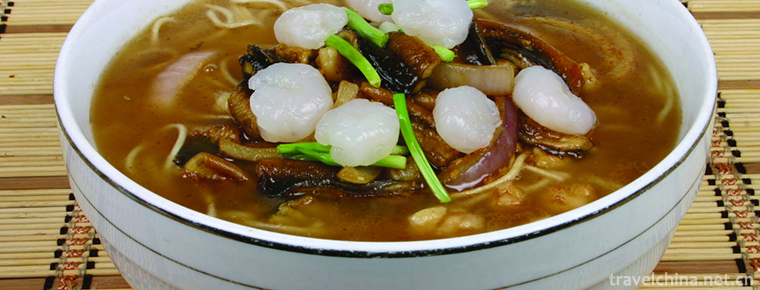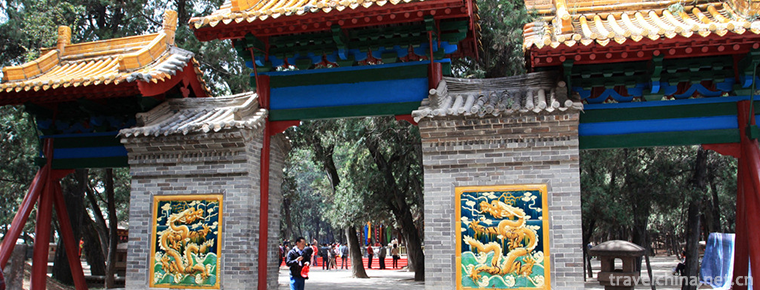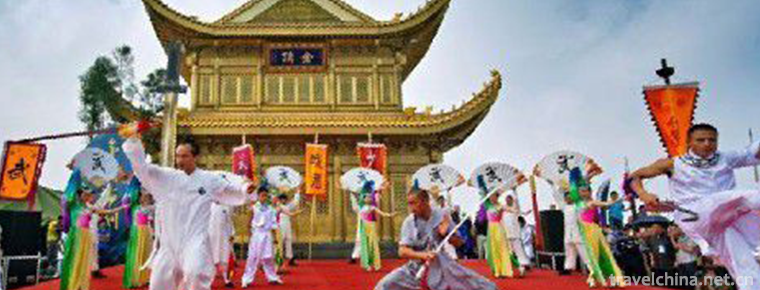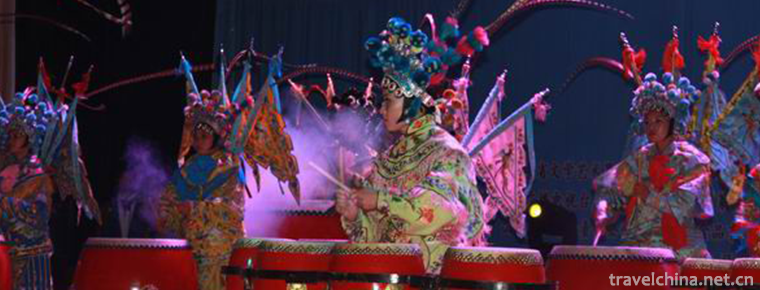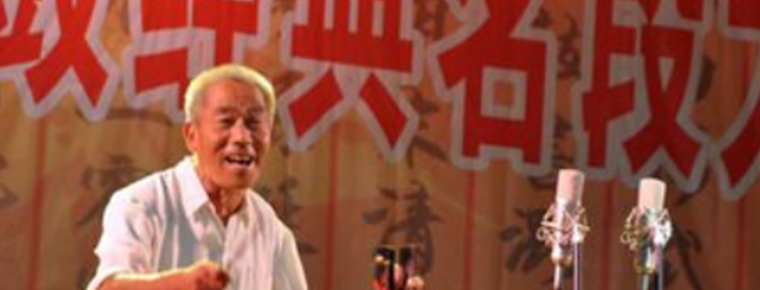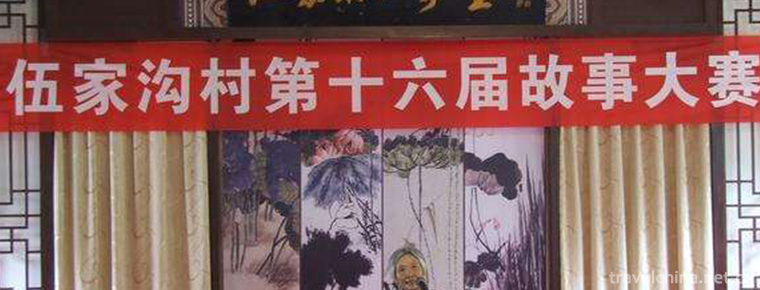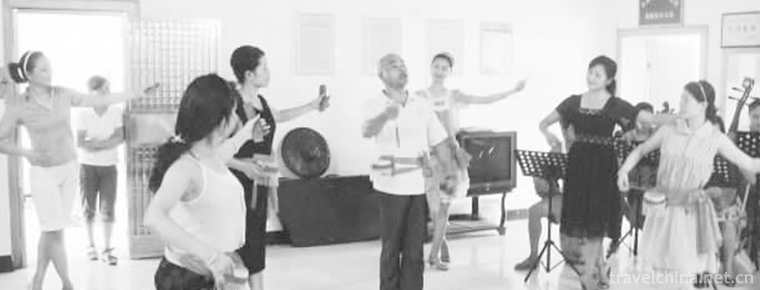Tajik costumes
Tajik costumes
Tajik costume refers to the costume with distinct ethnic characteristics of Tajik. Tajik people mainly live in the Pamir Plateau with cold climate. Their economic life is mainly animal husbandry and agriculture. Therefore, their clothes are made of fur and felt brown. After the Qing Dynasty, more and more self-woven earth cloth and foreign silk were used. Men and women wear red, long, pointed, soft-soled leather boots and felt socks, woolen socks.
On May 23, 2011, Tajik clothing was approved by the State Council to be included in the third batch of national intangible cultural heritage list.
Origin of Development
The reasons for its formation are lack of specific research on nomadic-centered "herdsmen" lifestyle, and lack of pertinence on clothing tailoring and production technology, which is still in the blank stage. Therefore, the research on Tajik handicraft industry based on field investigation in this paper can fill in the blank of the research status in this field.
In recent years, with the promotion of intangible cultural heritage protection and the impact of market economy, Taji began to actively overcome the decorative handicraft. It is worth noting that the changes of handicraft technology are also obvious after it breaks away from the original nomadic environment of clothing production. For example, woolen clothing, silk dress, Silver Necklace and Laska silver jewelry, which originally belonged to Tajik girls singing and dancing in Bajar Festival, are created by folk handicraft, but now they are used in the clothes of hosts, dancers and organizers of festival opening ceremonies. Their cultural connotations are also attached to them. It's lost a lot. Tajik native embroidery, such as pick embroidery, flat embroidery, Patchwork and other traditional crafts, has been used as tourist commodities to attract visitors. Tourists do not seem to care whether these crafts retain the original folk cultural nature, but only because of their unique form as a national symbol of commodities.
Youth and the Old
The robust Tajik youth and the elderly have a high-quality leather suit. In summer, in order to adapt to the changeable climate in high mountains, they also wear leather or camel wool coats, white fur caps, upper made of sheepskin and Yak Hide as soles.
Barrel boots. Wear epithelial boots, cross glaciers, climb snow ridges and walk freely.
Women's clothing
Tajik women are fair-skinned, beautiful and handsome. They like to wear red or embroidered lace dresses in big purple and green tones. Tajik girls love round caps embroidered in purple, golden and bright red velvet. Flower patterns of gold, silver and pearls around the brim of the cap. The front of the cap is decorated with a row of brightly colored beads or small silver chains. The Tajiks, known as "the family living on clouds", are not only beautiful and moving, but also have a pair of dexterous hands. They are almost all good at embroidery and knitting. Tajik people's clothes, hats, gloves, belts, stockings, quilts, wall hangings, felt, saddle cushions and other top, all have their carefully embroidered patterns and flowers, which play an important role in beautifying and enriching their lives. They not only attach importance to the decoration of the chest and collar cuffs, but also deliberately decorate the back to make the overall coordination of the clothing. Clothes, hats and belts are mostly embroidered with patterns. The front of the cap was embroidered in various colors, and a small silver chain was added to the eaves of the cap when it was dressed. Also wear earrings, necklaces and various silver bras. Bride women adorn their braids with silk spikes. Married young women adorn their braids with white buttons. Beautiful decorations make women look like flowers.
Men's clothing
Tajik men usually wear shirts, long black coats without collars and flats, and sheepskin coats in winter. Women like to wear dresses and coats in cold weather all year round. Men wear high round hats with embroidered patterns made of black velvet. Women wear dome embroidered cotton caps, and when they go out, they wear a large shawl. The color is mostly white, while the bride must use red. Men and women wear red, long, pointed, soft-soled leather boots and felt socks, woolen socks. The leather boots are exquisite in making and comfortable in keeping warm. Tajik women's clothing is gorgeous and dazzling, mostly in red. They like to wear dresses, embroider beautiful patterns on skirts, necklaces and cuffs, and adorn themselves with earrings, necklaces and bracelets. Their headwear and hats are also very exquisite. There is a round flower cap worn by young women with gold and silver pieces and beads inlaid on it. There is a row of bright colored beads and silver chains hanging at the front of the cap. In Tashkurkan, people can see all over Tajik women dressed up as fairies falling from clouds to the world. Married women's clothes are also very moving. When they go out, they wear big headscarves outside their hats and walk in the wind. The headscarves flutter with the wind. They are very graceful and have a different demeanor.
Manufacturing Technology
After the reform and opening up, the tourism industry of Tajik County has gradually flourished. In recent years, a number of enterprises operating Tajik embroidery have emerged. The production of embroidery apparel has led to the development of local tourism. However, the rough production of these goods and the prospect of their crafts are worrying. Facing the commercial competition, the Saltagitajik Handicraft Factory located in the east of the county town actively analyzes fashion, creates fashion, and combines traditional handicraft with it to enhance the cultural added value of traditional handicraft. After technology discovery, product development and market promotion, Saltaji National Handicraft Factory has got rid of the early individual production mode and made progress towards large-scale enterprises. Saltaji's approach is to combine traditional crafts with modern fashion. Whether it is carpet weaving or sock knitting, the key to handicraft inheritance lies in highlighting the unique cultural attributes of the nation, so as to achieve "novelty in change, novelty in novelty".
The quilting embroidery of embroidery trim, hat trim, beading and Fur Boot dyeing and finishing are the three most representative handicraft techniques of Tajik overcoming trim, especially the first two are the spirit of Tajik overcoming trim. Clothing technology is embodied in the process of dyeing, dyeing and finishing, tailoring, sewing, embroidery, lace mending, gold and silver jewelry, all undertaken by women. The core technology of hat making includes quilting, embroidery and beading on the brim of the hat. These two requirements for individual skills are very high. Fur and leather boots are now fading out of Tajik life, and the whole process of tanning, combing, dyeing and stitching has been lost.
Matters needing attention
With the rise of the protection boom of intangible cultural heritage and the development of modernization process, carrying forward Taji's overcoming decorative arts and crafts culture needs to start from the following two aspects: 1) not easily changing production habits, protecting folk thinking, sticking to the "traditionality" of costume culture from crafts to styles, materials to tools, and retaining the soul and charm of Costume crafts to the greatest extent; 2) initiative and the knot of the times; We should keep pace with the times on the basis of retaining the charm of traditional crafts, keep up with the pace of modern aesthetics, combine tradition with fashion, adapt to the needs of the times, update styles in time and promote the all-round development of costume culture. Even in today's vigorous appeal for the protection of folk crafts, under the impact of global economic integration, there are still many thousands of years of inheritance of clothing crafts are undergoing qualitative changes. In this situation, Taji overcoming decoration to maintain traditional crafts, both the government's participation and support, but also need more external help. Tashkurgan, as a relatively complete preservation area of folklore, has not changed the special costume customs of daily life, which makes the inheritance of costume crafts relatively easy. At present, with the help of the government and the people, the handicraft production of clothing in Taxian County has been greatly restored. There are nearly 100 garment handicraft enterprises in existence, forming a prosperous situation. At the same time, with the help of the exchange platform of famous and excellent exhibitions, cultural expositions and multi-national exhibitions in Xinjiang, some kinds of embroidery and garments that have disappeared for a long time have also been excavated.
social influence
The growth status of inheritors is an important perspective to study Taji's overcoming decorative changes. In fact, before being selected as the national heritage site, the production of Taji's overcoming jewelry crafts had withered. Influenced by modern technology, most of the crafts were replaced by mechanical manufacturing, thus stifling the enthusiasm of craftsmen, and only a few veteran craftsmen were still sticking to it. In this case, the application for intangible cultural heritage has brought opportunities for the revival of apparel technology. The government has supported the sideline industry and small handicraft industry scattered in various villages and counties in Tashkurgan, especially the protection of wedding suits with a long history of inheritance. The second issue of Li Nan: Taji overcomes the reasons for the continued popularity of decorative arts and culture industry. And situation thinking. 169. Great progress has been made, so the production of apparel craftsmanship has been revitalized. More importantly, after the establishment of the intangible cultural heritage "Tajik costumes", the relevant departments have investigated and identified the outstanding handicraft people, and their social status has been improved. The author has made relevant census and records for some representative inheritors of Tajik overcoming decoration techniques, as shown in Table 1. In the past, apparel technology was basically owned by women in the family, and crafts were the production and lifestyle of millions of households, but the status of craftsmen was not prominent. After the establishment of the nature of heritage, Taji overcame the dramatic rise in the social status of decorative craftsmen, from the general members of the family to the highly concerned inheritors of craftsmanship. Of course, in order to match this title, clothing craftsmen need not only superb intelligence and spirituality, master the exquisite skills handed down from generation to generation, but also come out of the narrow and simple family workshops, fully display their own handicraft skills, break the barriers to the spread of skills. Facts have proved that Taji's enthusiasm for overcoming decorative craftsmen has been greatly improved by attaching importance to clothing technology. Craftsmen are less conservative and concealed, more open-minded and mutually supportive, and accept new norms and working mechanisms; they can change and adapt in time to social changes, they are both designers, tailors and embroiderers. Tajik craftsmen have a complete technical system. While inheriting their skills, they can timely recreate traditional costumes with modern aesthetic consciousness to adapt them to the modern environment. Therefore, the vitality of national skills is very tenacious. However, at present, most of the craftsmen are still herdsmen women in the countryside, and the realistic environment of "isolation" makes some stitching and embroidery skills can only be inherited within the family. Because of the small number of people who master the skills of weaving and embroidery, the average age of embroidery women is over 50 years old. At the same time, Taji's low popularity of overcoming decorative skills limits its inheritance and promotion.
protective measures
Taji overcame decorative crafts as a major mode of production occupies people's daily life, which determines that it can take the road of "productive practice" in today's cultural protection. Before the founding of New China, the production of Tajik traditional clothing mainly focused on the family handicraft industry, which was small in scale. The main body of inheritance of skills was the members of the family. "There is no workshop in Taxian County, and there is no professional craftsman. Many production tools are purchased from other places. Local herdsmen have to carry out some household handicraft production, such as felt, stockings, leather caps, pockets of horse clothes, soft leather boots, woolen cloth made by indigenous method, and processed fur and leather, etc. , but these things are basically just to meet their own needs, very few. For sale. Individual craftsmen engaged in textile and clothing are all women. Because of the low social status of women, the clothing skills created by them have not been paid attention to. With conservative ideas, some needle and thread manipulation techniques are inevitably lost. After the founding of New China, Taji overcame the corresponding transformation of ornamental craft production, and the collective ownership of factories and handicraft societies enriched the form of costume production. Nowadays, most of the well-known female craftsmen and costume production inheritors in villages and towns are trained in the cooperative period. In 1958, the County Commerce Bureau established a comprehensive processing plant, including leather products, wool products, sewing and boot-making industries. The number of handicraft products increased, and the volume of Volume 4 of the Journal of Garment 170 increased considerably. The Handicraft Association of the Second Light Bureau of Tashkurgan County was established in 1978. It mainly produces and manages ethnic garments, households and buildings. In 1993, the total income of its affiliated enterprises was 1.5 million yuan . In this context, clothing and crafts through family inheritance and apprenticeship inheritance of these two ways, to cultivate a group of shoulder the heavy responsibility of technical backbone women, they continue the oldest traditional crafts, through pure manual labor, skills into commodities. Until the early 1990s, Tajik women still adopted the old mode of production and labor, without any mechanization . After the market economy transition in the 1990s, the disintegration of state-owned or collective enterprises appeared all over the country. In Tashkorgan County, the industrial operation centered on traditional clothing lost its competitiveness. "With the deepening of reform and opening-up, the primary enterprises in the center of handicraft associations were abolished one after another." Family workshops returned to the dominant position of handicraft industry, and individual women's Hong was restored. Become the main body of traditional costume skills. Some family-style clothing workshops have appeared in Zirefu Xiati, Kuksilugh and Datong townships, serving farmers and herdsmen who need traditional clothing and hats. These individual tailors have strong flexibility. They can not only process materials directly, but also contract materials, which can meet the specific requirements of villagers for clothing. In 2010, Tajik overcoming decoration was listed as the protection object of "intangible cultural heritage". Traditional craftsmanship was pushed to the market again. A large number of small enterprises dealing with clothing and handicraft products emerged, which activated the local economy. Tajik embroidery pendants, carpets, tablecloths, ready-made clothes and handbags with good quality and low price are wholesale sold all over the country in some small tourist commodity cities in Taxian, Kashgar and Urumqi. In many tourist attractions, colorful Tajik overcoming jewelry can be seen. Tajik handicraft has promoted the local economic development, but such a rapid expansion of the development trend, there must be some hidden dangers. For example, the handicraft products produced by garment enterprises are mainly aimed at tourists and wholesalers. They only need to buy goods with Tajik flavor at a low price. They have local characteristics in form and do not care about the correct embedding way of traditional skills. Driven by short-term interests, this kind of folk art has long been separated from Tajik folklore, producing and selling as merchandise. In addition to the development of handicraft enterprises, individual workshop industry also ushered in a prosperous period. Traditional clothing occupies a special position in Tajik life, and it is also an important component of their national cultural identity . Tajik women wearing national caps, scarves and embroidery bags can be seen on the streets of Tajik County at any time. The indoor furnishings of Tajik people are also full of embroidery. According to the research, almost all the artifacts used by Tajiks everyday come from the family workshops of female craftsmen. Due to the daily use of traditional handicraft, there is a stable market within the nation, and individual workshops with superb skills can produce hundreds of bridal dresses every year, which is still the strongest folk technical force of the Tajik nation.

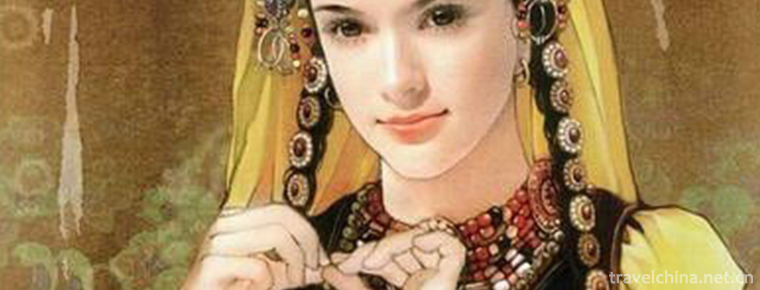
-
Noodles with quickfried eel shreds and shelled shrimps
Shrimp fried eel noodles is a famous traditional food in Kui yuan hall, Hangzhou City, Zhejiang province. When the shrimp is cooked with fried eel noodles, select the strong fresh eel,.
Views: 158 Time 2018-10-27 -
Qinhuangdao Shanhaiguan Scenic Area
Shanhaiguan, also known as Yuguan, Yuguan and Linluguan, is located 15 kilometers northeast of Qinhuangdao City, Hebei Province.
Views: 163 Time 2018-11-24 -
Huangdi Mausoleum Scenic Area
Huangdi Mausoleum is the tomb of Xuanyuan Huangdi, the ancestor of the Chinese nation. It is the only Huangdi Mausoleum recorded in Historical Records..
Views: 151 Time 2018-12-12 -
Fuping Pottery Art Village
Pottery Village is located in the north of Fuping County. It relies on the site of Tang Dingzhou Kiln. It is a cultural and custom experience scenic spot consisting of a quasi-three-star hotel, three .
Views: 154 Time 2019-01-12 -
martial art of emei
Emei Wushu is one of the traditional Chinese Wushu schools, and its birthplace is Emei, a famous mountain in China. Including the worldwide spread of "Five Flowers".
Views: 107 Time 2019-04-28 -
Liaoning wind and percussion ensemble
Liaoning drum music, commonly known as drum music. It is one of the traditional folk instrumental music in China. Liaoning drum music is divided into Suona music and Sheng wind music, and according to.
Views: 283 Time 2019-05-13 -
Linxia brick carving
Linxia brick carving (also known as Hezhou brick carving) is a practical art closely combined with buildings. Linxia brick carving matured in the Ming and Qing dynasties, and in modern times it absorb.
Views: 114 Time 2019-05-13 -
Lu an drum
Luan drum is a traditional drum book and drum music form with distinct regional characteristics in the north, also known as the "old tune of Lu'an". It is named for its popularity in the are.
Views: 437 Time 2019-05-15 -
Wujiagou Folk Stories
Wujiagou folktales originated in Wujiagou Village, Liuliping Town, west of Danjiangkou City, Hubei Province. They are a wonderful flower in the garden of Chinese traditional folk literature. They advo.
Views: 182 Time 2019-06-29 -
Yongxin Drum
Yongxin Xiaogu is one of the traditional operas in Ji'an City, Jiangxi Province, which originated from Taoism. Legend has it that it was formed in Yongxin, Jiangxi Province during the reign of Qingdao.
Views: 177 Time 2019-07-14 -
Bijia mountain Luzhou City Sichuan Province
Bijia mountain is located in Hejiang County, Luzhou City, Sichuan Province, 42km away from Luzhou City and 7km away from Hejiang county. Bijia mountain is named for its three peaks standing like a penholder. Bijia mountain area is dangerous, surrounded by cliffs and cliffs. The mountain has the characteristics of typical red Danxia landform, unique landscape and beautiful scenery..
Views: 161 Time 2020-10-16 -
Yibin cultural characteristics
History of wine: Yibin has been a multi-ethnic area since ancient times. Relying on the customs and experience inherited from generation to generation, the people of all ethnic groups in this area have brewed their own historical wine in different historical peri.
Views: 117 Time 2020-12-18
